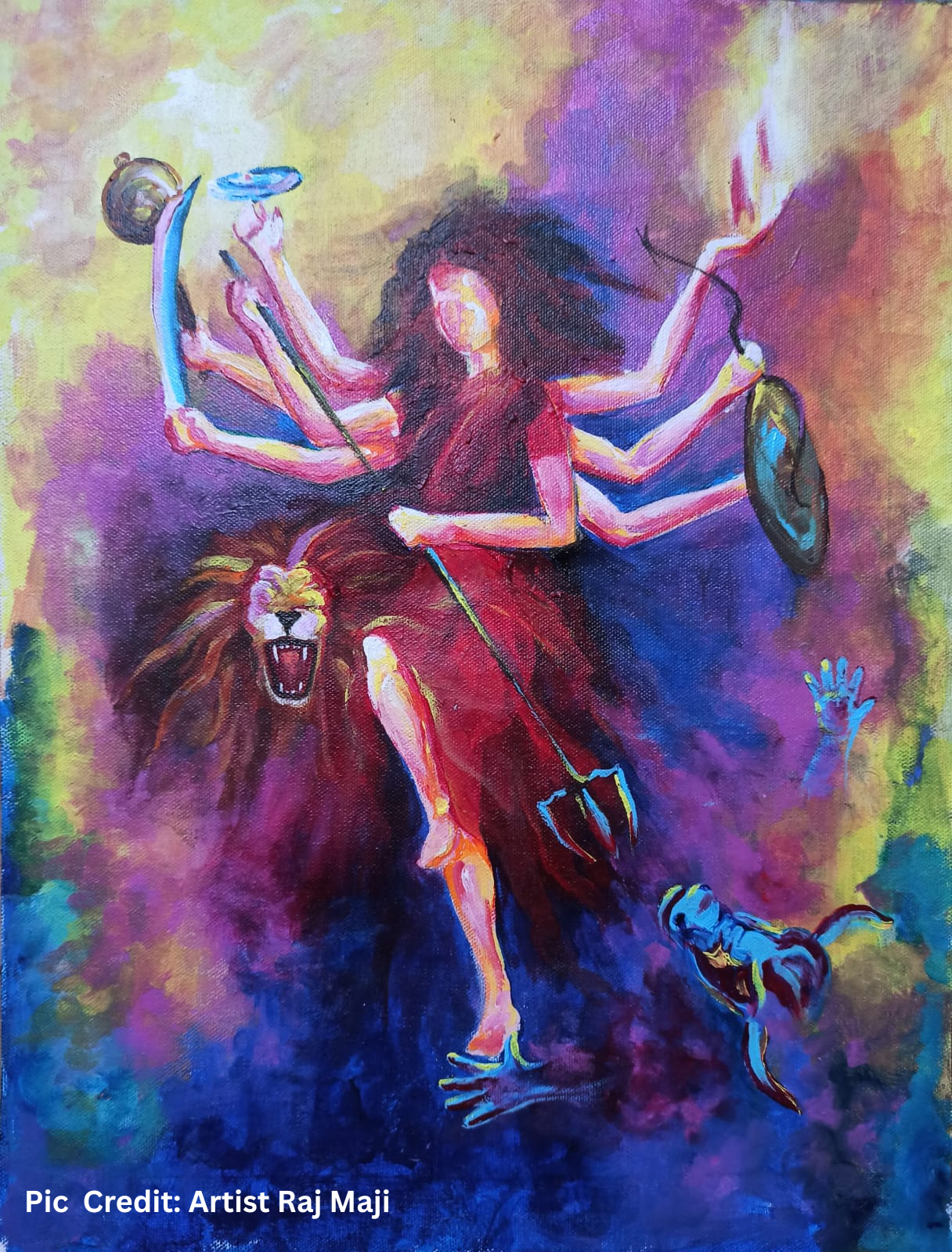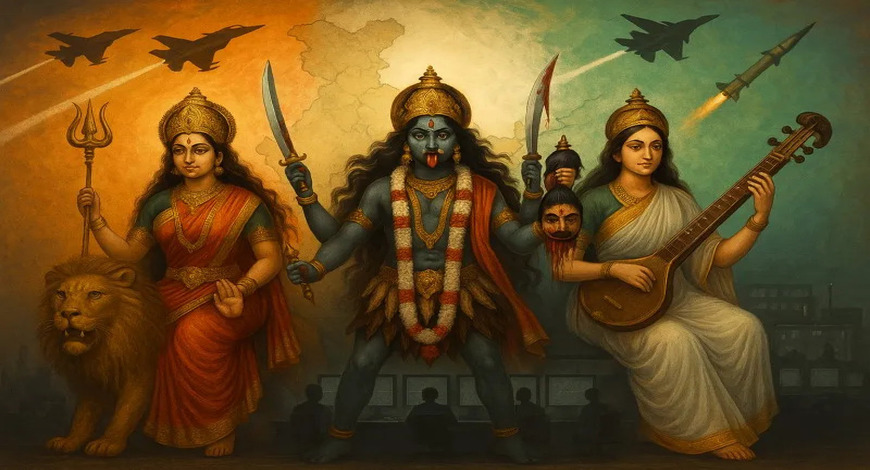There was a time in India when the divine feminine didn’t just reside in temples – she walked the earth. She wrote hymns, led philosophical debates, chose her partners, ruled kingdoms, and even went to war. She was not just worshipped in the form of goddesses like Saraswati, Durga, and Kali – she was them. But somewhere along the way, that powerful Shakti was silenced, tucked away behind veils and within walls.
So what changed? How did we go from women being seen as embodiments of cosmic power to being told that their role lies in servitude and silence?
Let’s rewind to the beginning.
The Vedic Era: Where Women Were Fire, Not Just Light
The early Vedic period (roughly 1500 -1000 BCE) was remarkably progressive when it came to women. The Rigveda, the oldest of the four Vedas, doesn’t just mention women – it features them as sages and thinkers. Gargi Vachaknavi debated Yajnavalkya, one of the greatest scholars of the time, in the Brihadaranyaka Upanishad. And guess what? She held her ground. Lopamudra, wife of sage Agastya, composed hymns in the Rigveda, expressing her desires and intellect – making her one of the earliest known female Indian writers in history. Women like Maitreyi questioned the very nature of existence and the soul. This wasn’t a society where women were mere followers. They were seekers.
Education was open to them. Girls underwent the Upanayana (sacred thread ceremony) just like boys and studied scriptures. They weren’t excluded from yajnas (sacrificial rituals), nor were they bound to silence in spiritual matters.
They were Shakti – active, conscious, and free.
Queens, Warriors, and Decision-Makers
Beyond the Vedic texts, Indian mythological stories offer tales of women who ruled and led. From Rani Durgavati and Rani Rudrama Devi in later times to more ancient references like Kaikeyi and Sita from the Ramayana – who, despite popular perception, were strong-willed and politically aware. Women were central figures in governance and dharma. Even the Mahabharata, with all its moral complexity, features women like Satyavati and Draupadi, who questioned kings, challenged dharma, and refused to be passive in her fate.
The divine feminine wasn’t just divine – she was political, philosophical, sensual, and powerful.
The Downslide: The Gradual Stifling of Shakti
So what happened? How did we go from Gargi to Ghoonghat?
The decline of women’s status in India wasn’t sudden, but layered and complex. Some key reasons include:
1. Later Smriti Texts and Orthodox Interpretations
As society moved into the post-Vedic period, Smritis like the Manusmriti (circa 200 BCE–200 CE) began codifying social norms. These were not divine revelations like the Vedas, but human interpretations. Manu’s verses included things like “A woman should never be independent” – and that began shaping centuries of patriarchy. (Note: Manu the ancient hindu archetype ≠ Manu Smriti the legal text attributed to a compiler or school of thought)
Many scholars and famous female Indian writers today critique these distortions and advocate a return to Vedic values where women were respected as intellectual equals.
2. Rise of Ritualism Over Knowledge
The early Vedic period focused more on jnana(inner knowledge) and tapasya (austerity). Over time, emphasis shifted toward rigid rituals and orthodoxy. Women’s exclusion from yajnas, temple rituals, and philosophical councils began increasing – not because of spiritual logic, but due to changing social control.
3. Invasions and External Threats
With the arrival of invaders – from Alexander to the Islamic dynasties, and later the British – Indian society became more defensive. The urge to “protect” women led to practices like purdah, child marriage, and social seclusion. These weren’t rooted in hindu culture or what we today call the mythological Hindu stories, but were adaptations to external threats.
4. Loss of Shakti’s Nuanced Understanding
Goddesses remained powerful in temples, but society forgot what they truly symbolized.
Texts like the Devi Bhagavata Purana, part of the Shakta tradition, portray goddesses as fierce, wise, and world-governing. The Devi Bhagwat Puran describes the goddess not as subordinate to any god but as the supreme creative force herself. Yet, these philosophies were sidelined in favor of simplified roles where women were seen more as preservers of virtue than embodiments of divine will.
So, What’s the Takeaway?
We didn’t always think of women as second to men. In fact, the Shakti principle in Hinduism – the idea that the universe is powered by the feminine, means that nothing, literally nothing, can move without her. Shiva is Shava (a corpse) without Shakti. That’s not just spiritual poetry – that’s a worldview where feminine energy is the source of all creation. And yet, centuries of social change, fear, and misinterpretation shrunk that cosmic force into a role model of quiet obedience.
But Shakti never really dies – she waits.
And she’s waking up again. In women, reclaiming their education, their careers, their choices. In voices rising to challenge centuries of distortion. In a renewed interest in Indian culture, Indian mythological stories that portray women as more than just supporting characters. In the return to ancient texts like the Devi Bhagavata, now being revisited by modern scholars and female Indian writers not as nostalgia, but as reclamation.
And yes, this may mean some disruption and some destruction. But isn’t that what Kali does best?




